Wildfires around the world: The photos that explain the flames
- Published

24 July: Firefighters and volunteers try to extinguish flames during a wildfire at the Greek village of Kineta

Wildfires have been sweeping through coastal towns east of the Greek capital, Athens. Dozens of people - including families with children - have died as they tried to escape the flames.
But fires are also raging in Sweden, as far north as the Arctic Circle, and have caused huge damage in countries including Portugal, the UK and the US in recent months.
So what is happening to cause these infernos and how can we tackle them?
Flames take hold
Fires can occur naturally in woodland or brush, ignited by heat from the sun or a lightning strike.
However, the vast majority of wildfires - as many as 90% worldwide - are started by humans, according to experts.
The cause could be barbecue charcoal, a discarded cigarette or even arson. As long as there is fuel and oxygen available, the flames can take hold easily.
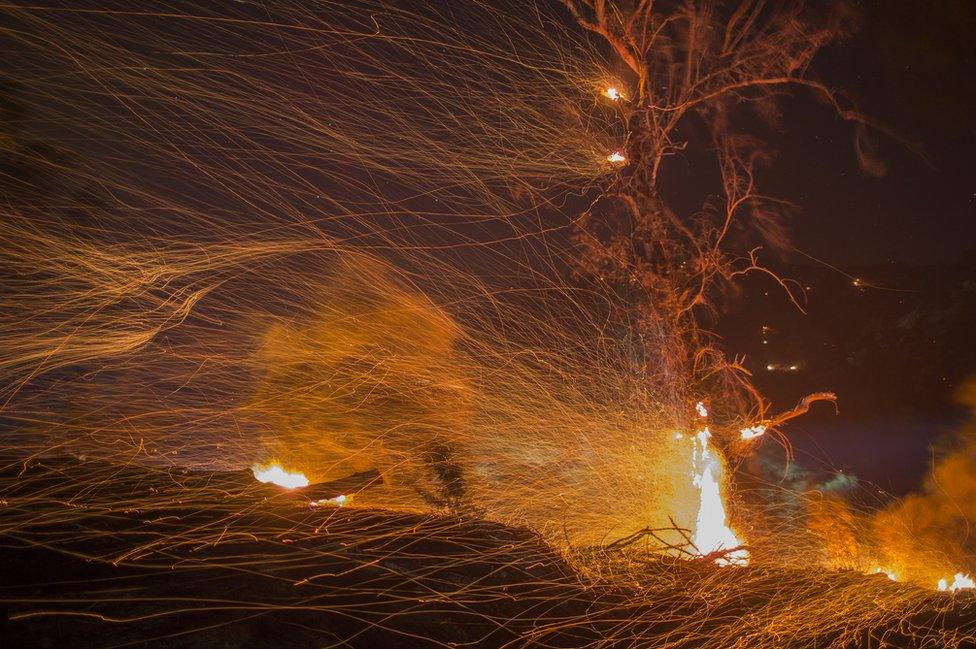
A strong wind blows embers in California
Greece had an unusually dry winter and spring this year, leaving grass and scrubland particularly flammable, says Thomas Smith, assistant professor in environmental geography at the London School of Economics and Political Science (LSE).
As well as a lack of rainfall, wind also determines how devastating the fire will be, depending on its strength and direction.
"Burning embers can travel quite far and start new fires that could spread for kilometres if they are big enough," says Smith.
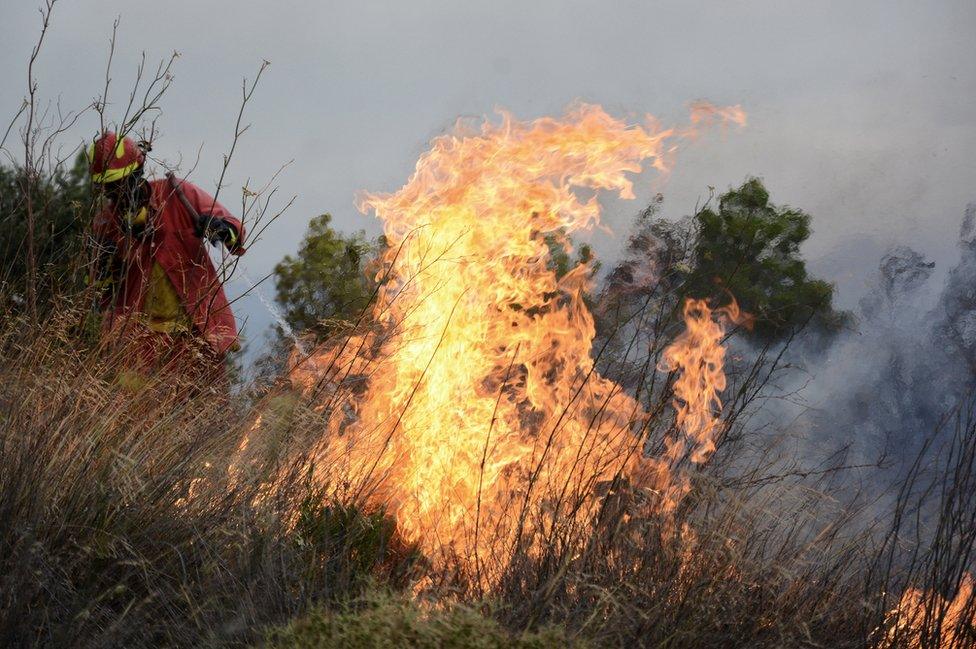
23 July: Dry grass burns as fire crews tackle the flames in Greece
Surface fires - burning on a forest floor, for instance - tend to spread slowly and can be more easily controlled.
In fact some surface fires can be good, says Cathelijne Stoof, a wild land fire expert based in the Netherlands. "It helps plants regenerate," she adds.
"The problem is when the flames can climb up low level branches and get to the tops of the trees. That's when you can't stop it."
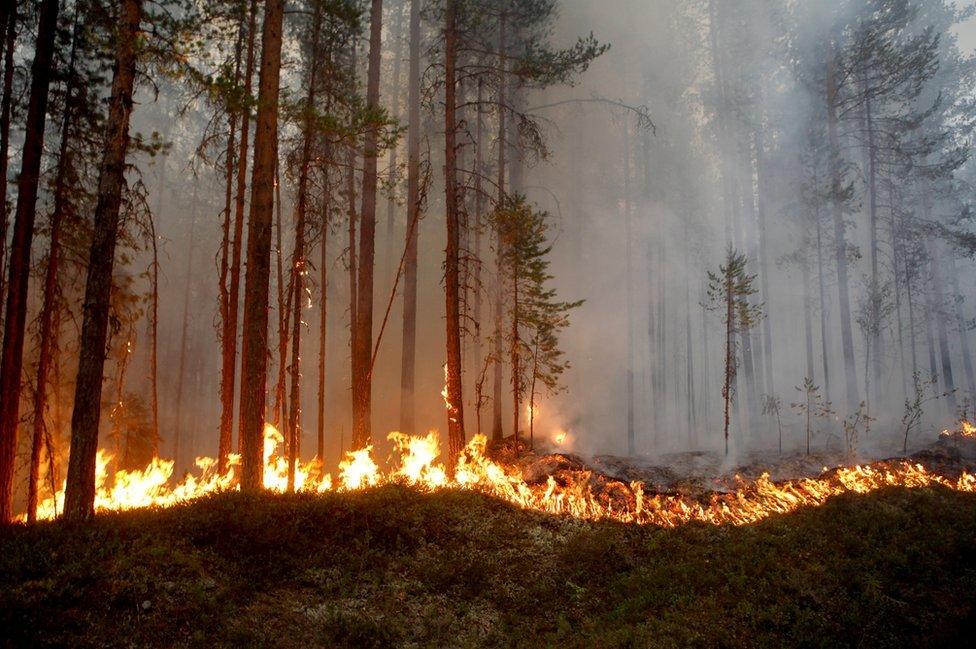
15 July: Due to the dry weather, about 80 wildfires have been burning in Sweden
The most dangerous part of a blaze is called the head fire, explains Thomas Smith.
It is driven forward by the wind and is very difficult to fight directly because it has long flame lengths.
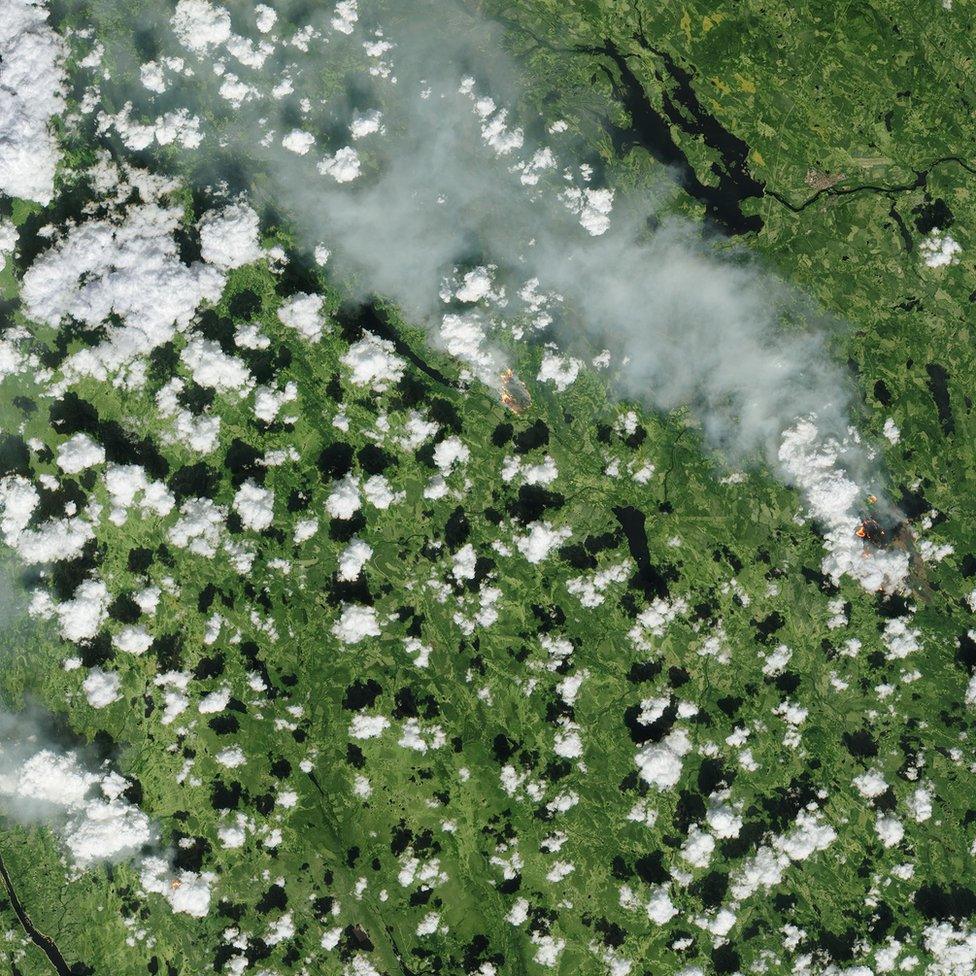
17 July: This aerial view provided by the European Space Agency shows smoke billowing from several fires between the west coast of Norway to central Sweden. Head fires burn with blacker smoke

But it is not just wood and grass that quickly become fuel for wildfires. Nearby homes and vehicles will combust because of the materials they contain, such as plastics and rubber.
Hazardous
In Greece, cars in the road caught fire before the surrounding verdant trees because they were more flammable. And they did not need to be directly licked by the flames to do so.
"It comes down to the amount of energy given off by the flames," says Smith. "The cars could be tens of metres away and still be close enough to ignite."
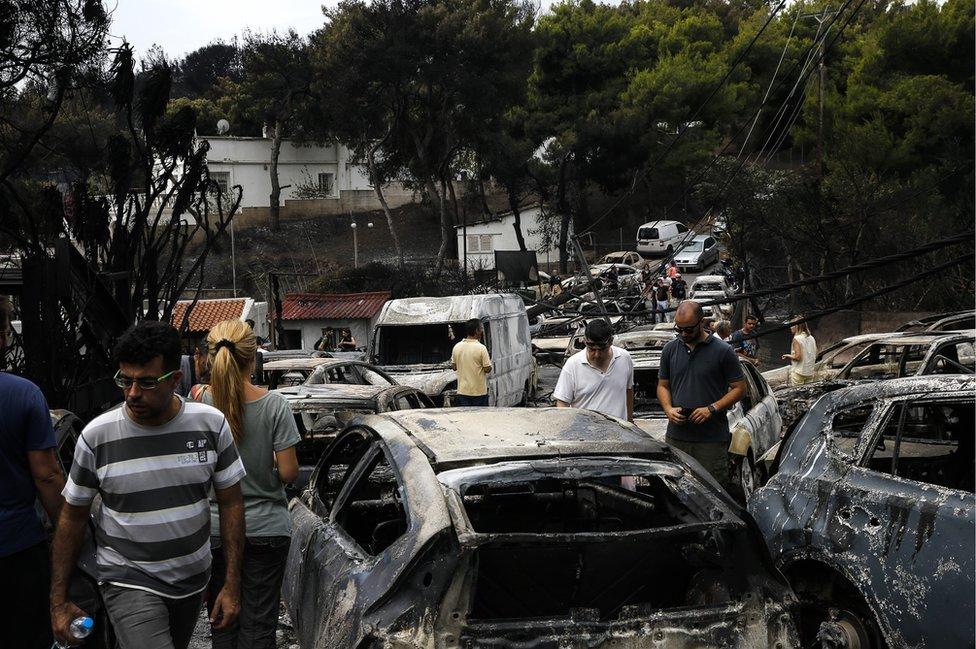
24 July: Burned cars are seen following a wildfire at the village of Mati near Athens
Sadly, people are often killed by wildfires as they attempt to escape.
Many of the victims in Greece were trapped in traffic jams as people tried to flee as fast as possible, according to forest risk management expert Alexander Held. But this could have been avoided with better evacuation plans in place, he says.
Fine fuel such as dry shrubs should be cleared away from roadsides and houses to stop flames getting close, he adds.
"This was a bomb waiting to explode."
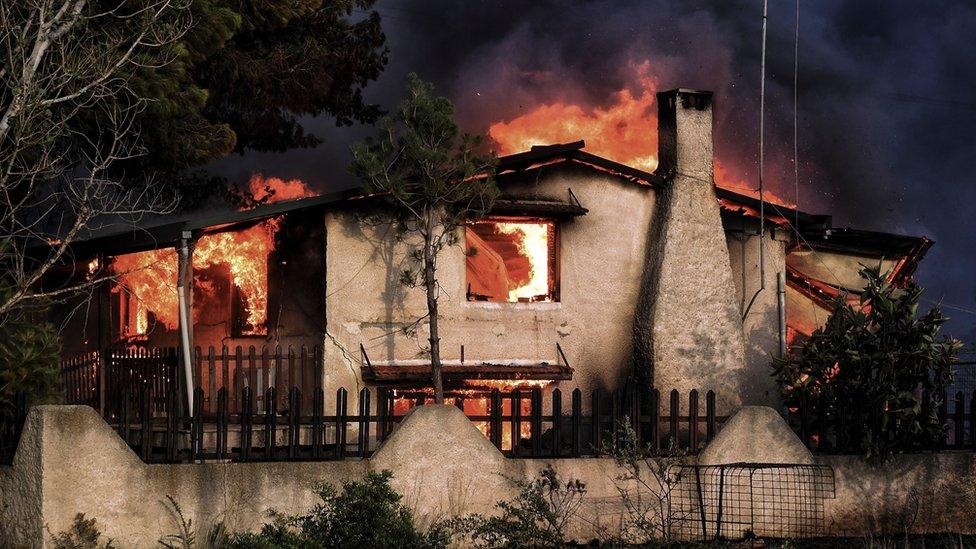
23 July: The contents of a home, including dry wooden beams, go up in flames in Greece
Heat and flames are the most immediate dangers people face in a wildfire.
However, smoke can also be harmful if you have an existing condition such as asthma or lung disease, or are exposed for weeks or months.
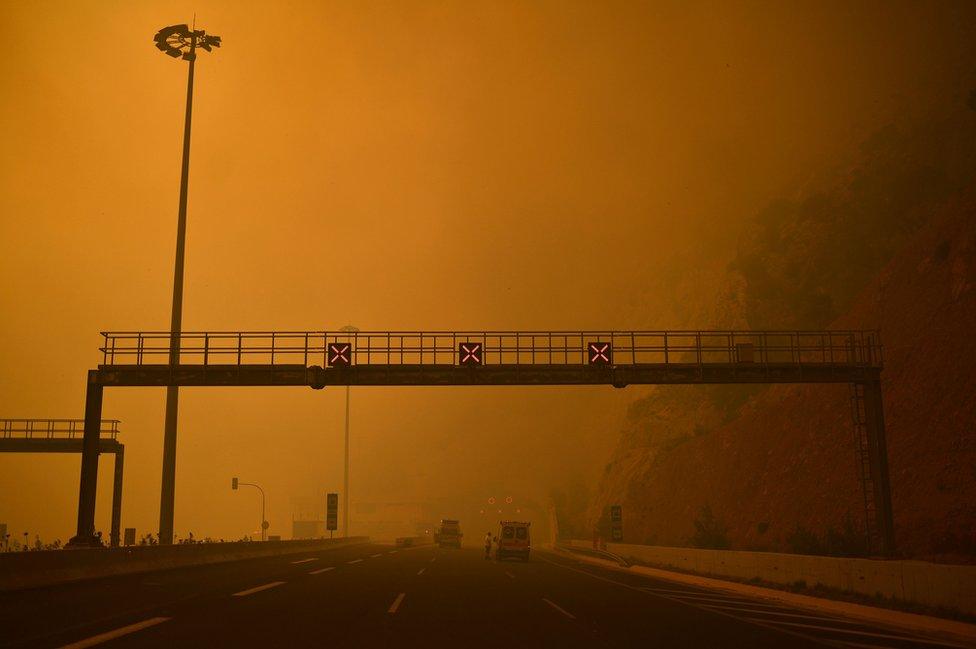
23 July: A road block is set up as smoke fills the air near Athens
Although smoke from burning vegetation is toxic, it will usually disappear quickly.
Fumes produced by burning plastic or asbestos inside homes are much more hazardous.
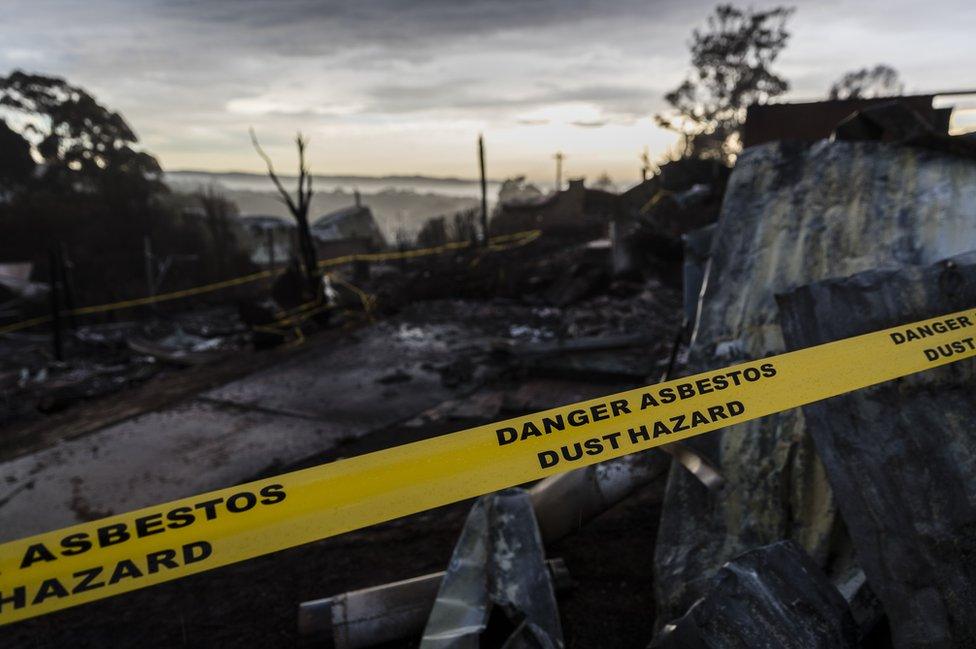
25 March: Ruins of a house are out of bounds after a bushfire in Tathra, Australia
As well as changing climates, the differing land use over the centuries has led to more wildfires in some places around the world, according to experts.
"There used to be small agricultural fields across Southern Europe and people would manage the land," says Cathelijne Stoof.
"But in the 20th Century people moved away and the land became overgrown. So when you do have a fire it spreads much more easily."
In the case of the huge fire near Saddleworth Moor in North West England, it was not just the vegetation that caught fire.
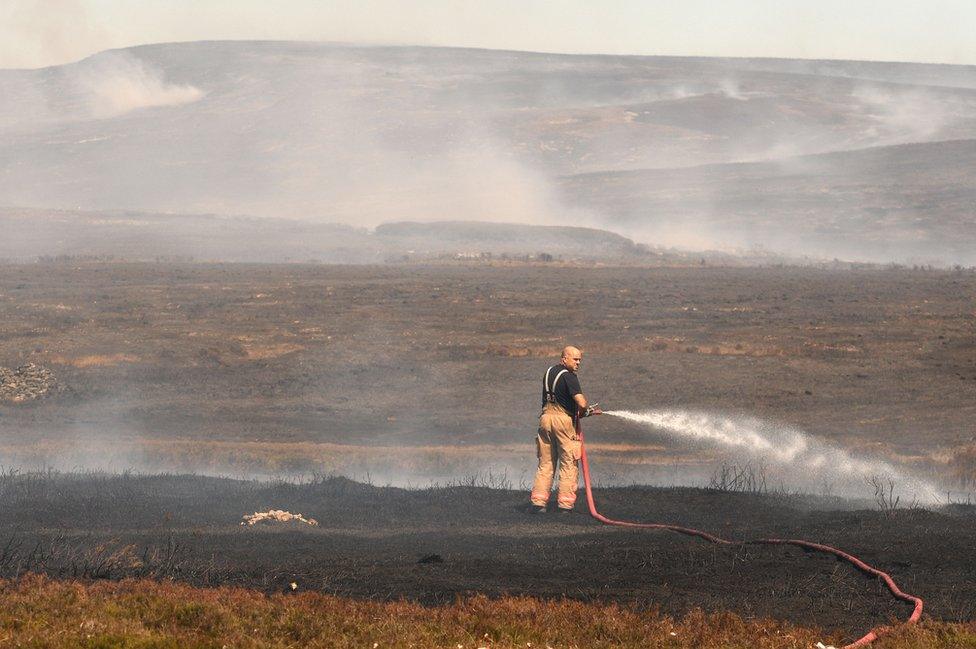
At its peak, the fire on Saddleworth Moor covered an area of 7 sq miles (18 sq km) and burned for three weeks
"This fire definitely did get into the soil," says Dr Thomas Smith. The moorland is made up of peat soil, which is carbon-rich and needs little oxygen to burn, he explains.
"The fire gets underground and smoulders away.... It makes it much more difficult to put out."
Fighting fire
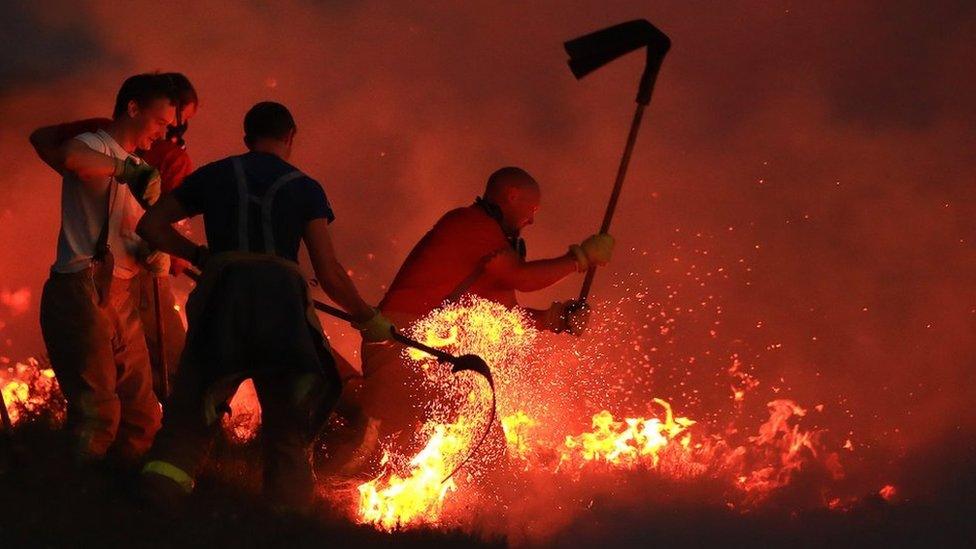
28 June: Firefighters tackle a wildfire with beaters on Winter Hill near Bolton, UK
Firefighters have a range of techniques to try to tackle a blaze by depriving it of oxygen or fuel. They need to have the right training to know which one will work the best.
In the recent UK wildfires, they used beaters and water hoses to extinguish the flames.
Dropping water and fire retardant containing fertiliser from planes and helicopters may also slow the spread of flames.
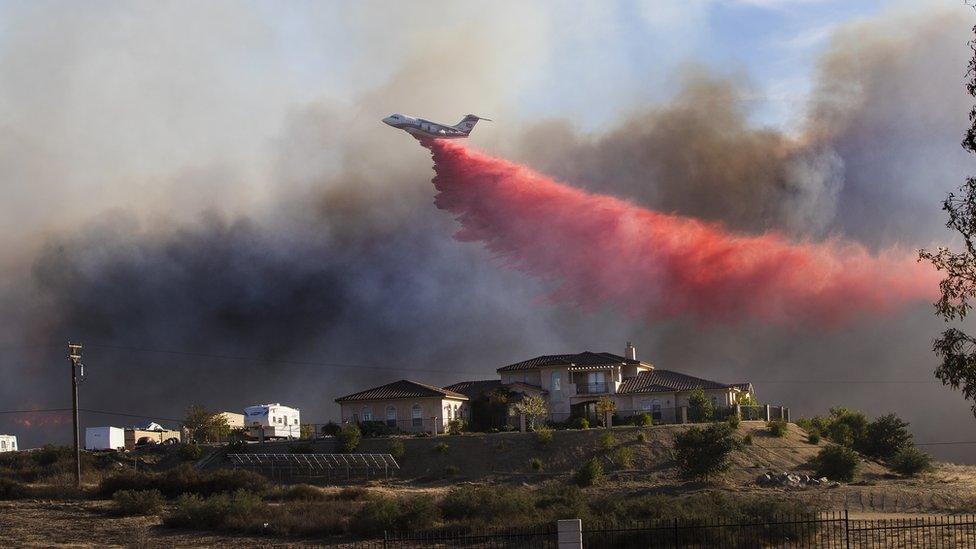
7 December 2017: A plane drops fire retardant near a home near Los Alamos Road in Murrieta, California, last December
Experts say one of the most effective methods of tackling wildfires is building firebreaks by clearing vegetation.
But this is "dirty and hard work", says Alexander Held, and not an option that is always popular in public opinion.
"You can send a lot of helicopters and planes but without crews on the ground you won't put it out," he insists.
Cathelijne Stoof agrees on the importance of creating firebreaks: in some places firefighters will create controlled fires to draw the energy out of the blaze they are battling.
And she says fire prevention and land management should be "sexier" than it is now.
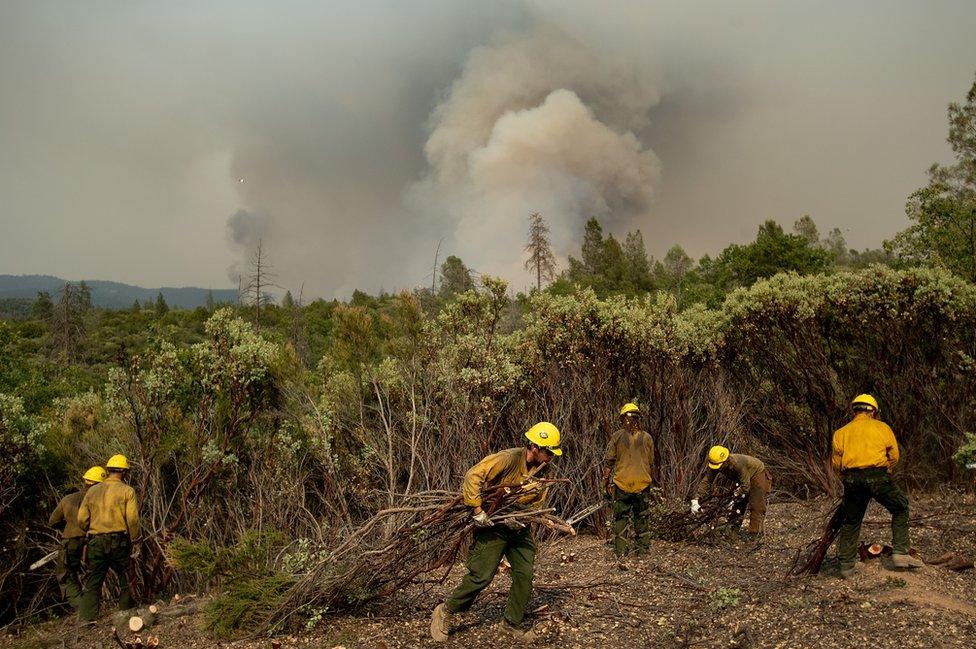
21 July: Firefighters create a firebreak in the Stanislaus National Forest, near Yosemite National Park, California
Teams with the right training can understand fire behaviour and choose the best way to respond, she says. But fire also behaves very unpredictably.
"It's dangerous. So I very much respect the people that put everything on the line to save others."
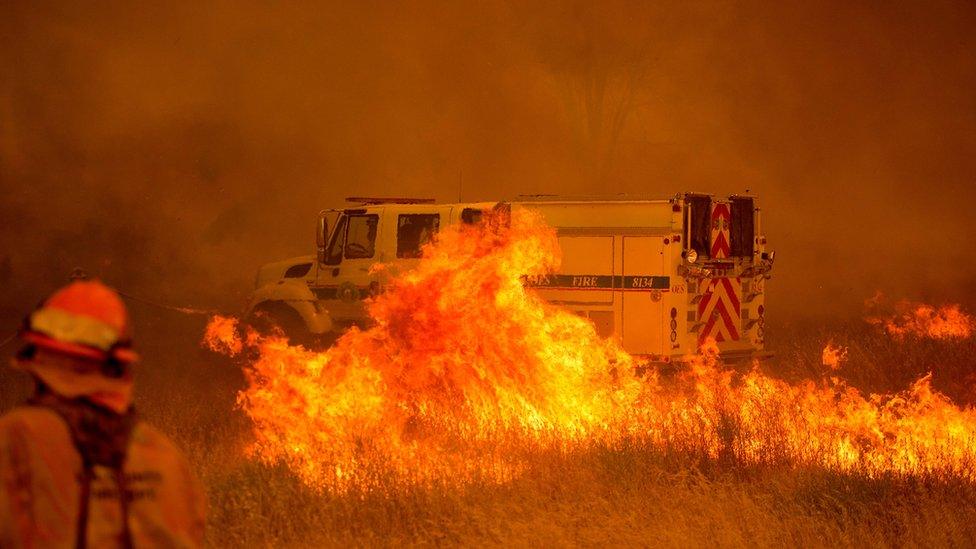
1 July: A fire service vehicle is surrounded by flames as the Pawnee wildfire jumps across a road in California
Images subject to copyright
- Published24 July 2018
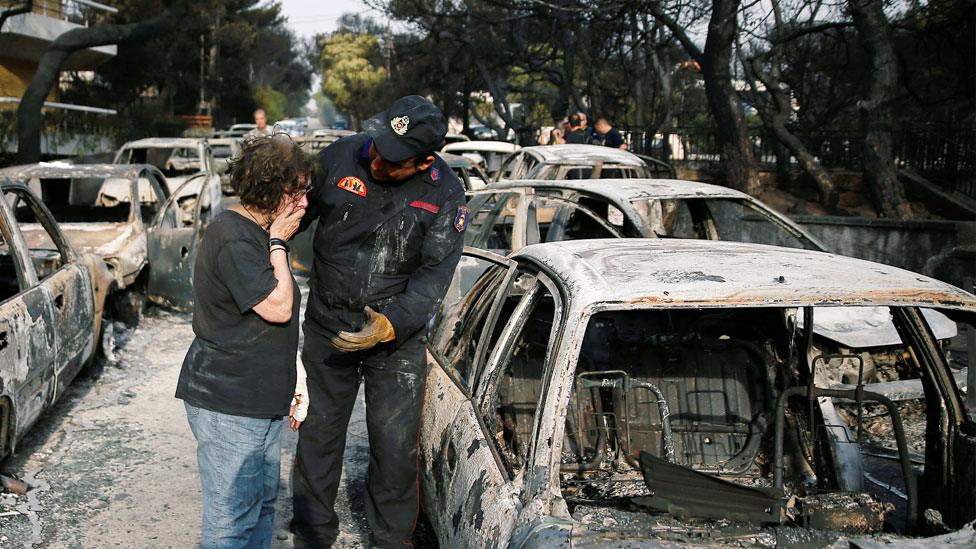
- Published28 June 2018
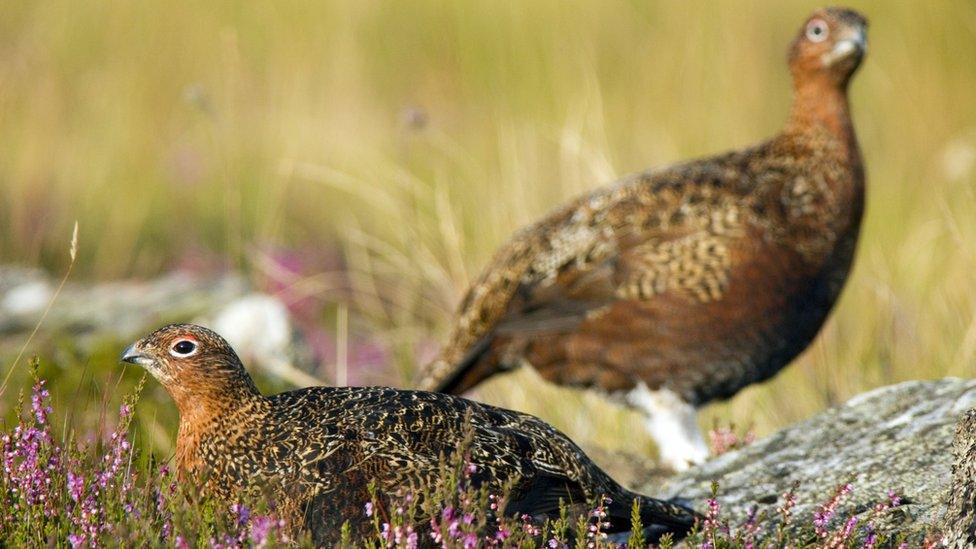
- Published25 July 2022
